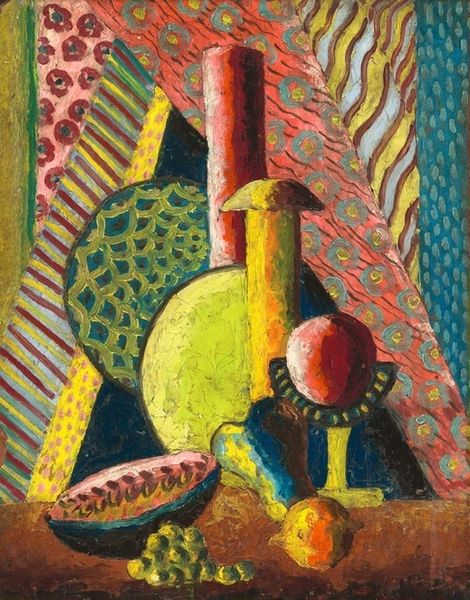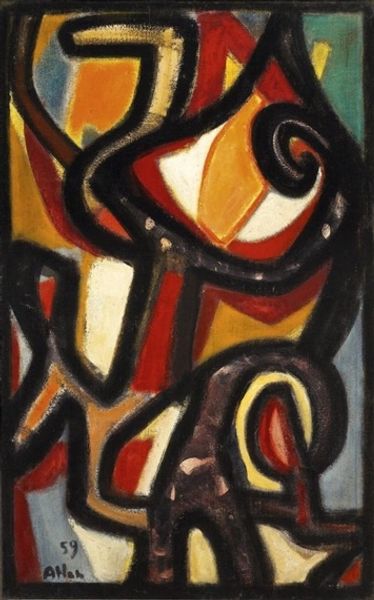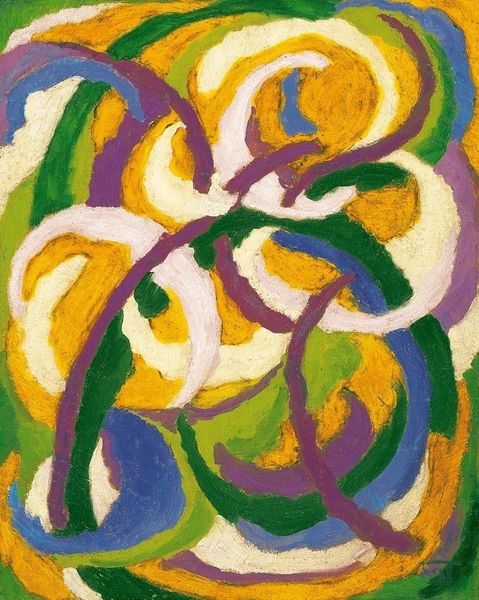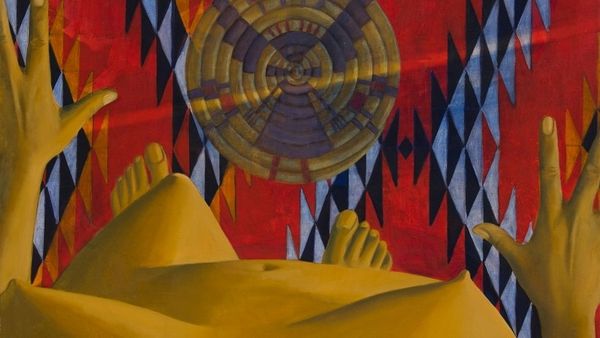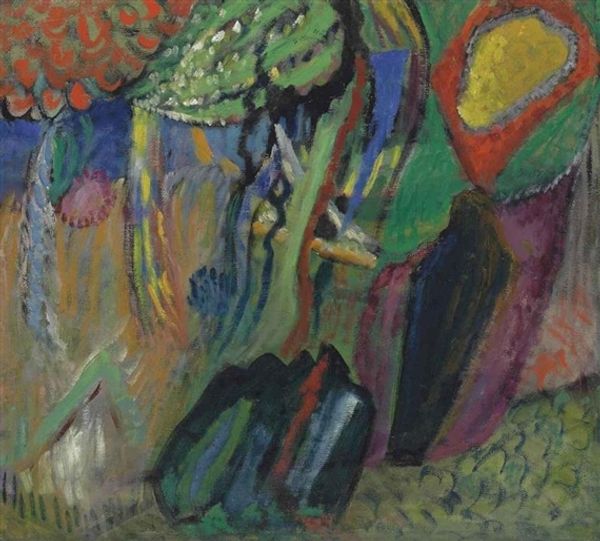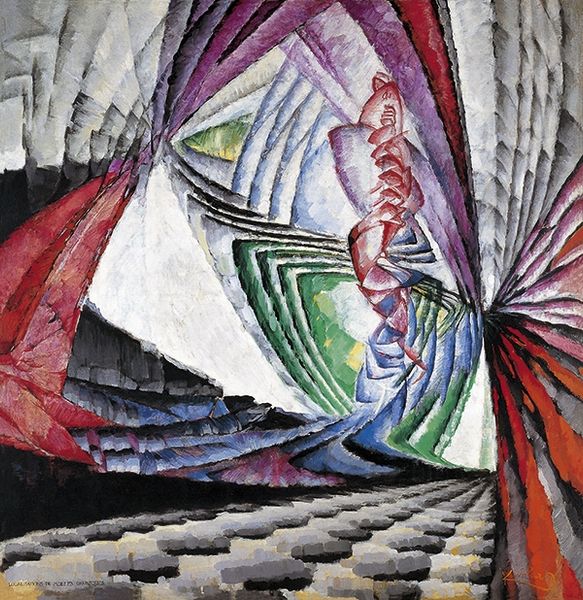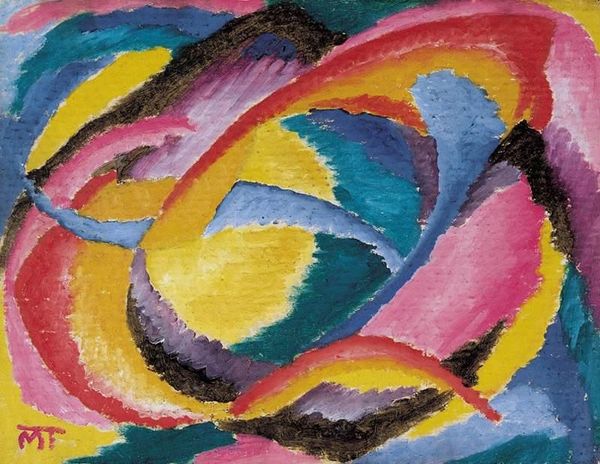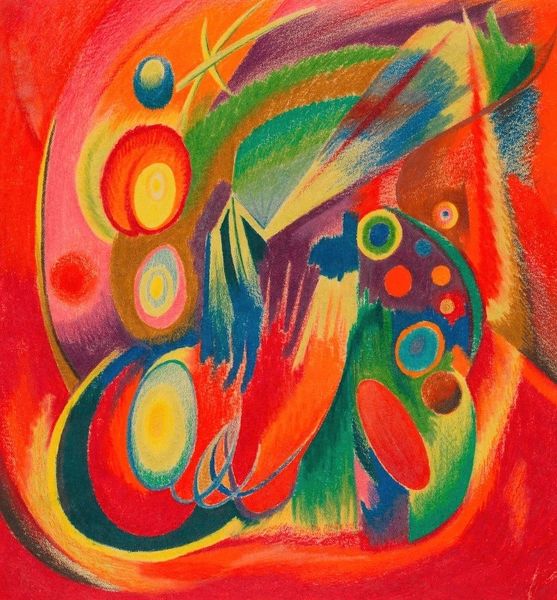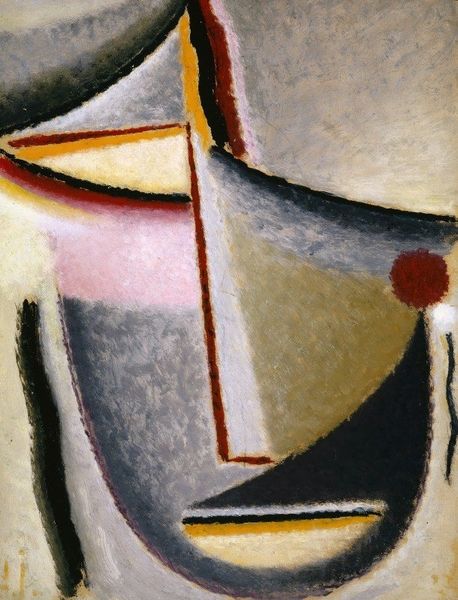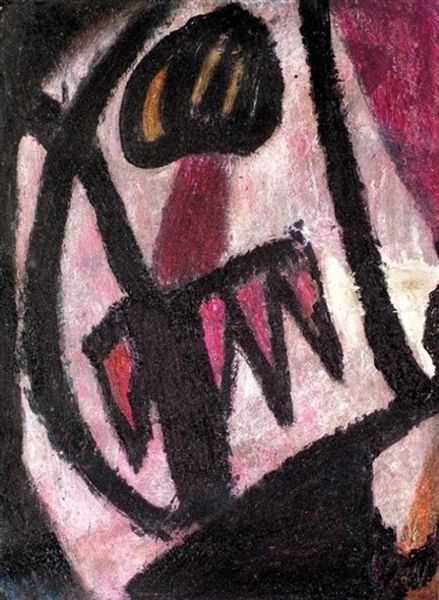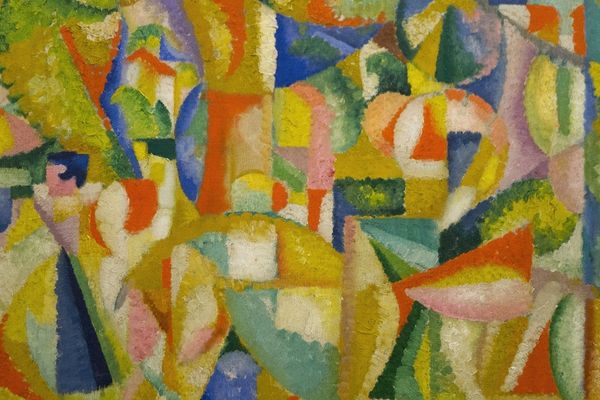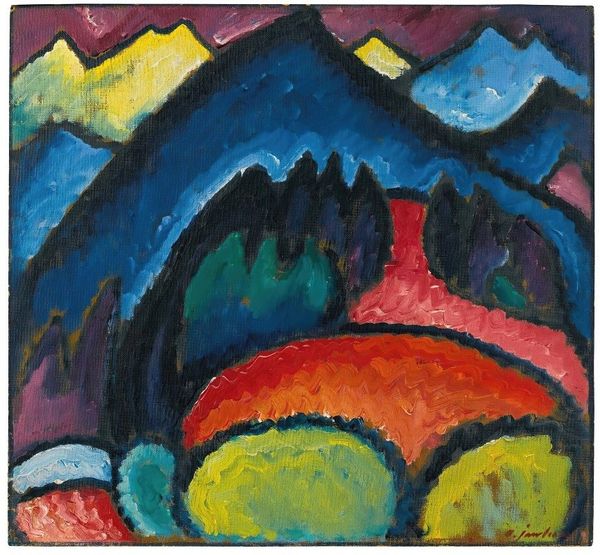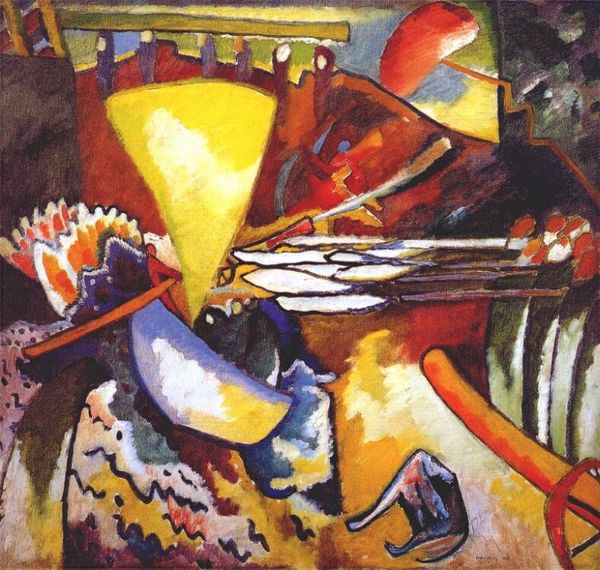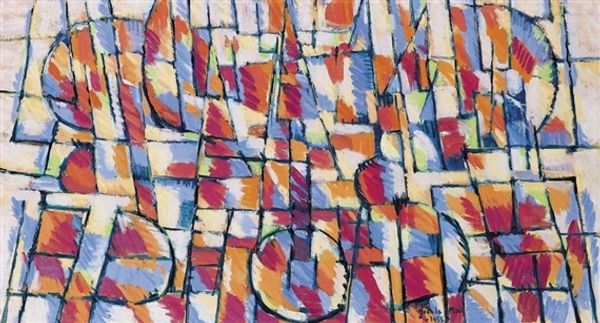
Copyright: Serge Charchoune,Fair Use
Editor: So, here we have Serge Charchoune's "La Mer Sauvage" from 1950, an oil painting that bursts with this vibrant, almost unsettling energy. It feels like peering into a microscope at some chaotic, unknown world. What do you see in this piece, in terms of its deeper symbolism? Curator: I see a convergence of cultural memories, Editor. Notice the almost Byzantine quality to the composition. Charchoune, with his Russian background, carries that iconographic tradition within him. Consider the bold colors—those yellows and deep blues, fighting for dominance, are reminiscent of stained glass, but also of raw, untamed nature. Does this speak to the dichotomy within us all? Editor: The dichotomy of nature makes sense given its name. It's both savage and inviting. Do you think the circular forms hint at some underlying unity or order, despite the chaos? Curator: Perhaps. The circle is, after all, one of the oldest and most potent symbols across cultures – representing wholeness, eternity, even the self. Yet, Charchoune fractures these circles, doesn't he? Breaking down the notion of a complete and contained self. He understood Kandinsky and the shifting inner life, as he had also explored Russian Futurism, and even Dada. Are there traces of these in Charchoune's wild sea? Editor: I didn't notice that until now. That chaotic structure reflecting life’s deeper reality and the futility of searching order, a hallmark of the Dada movement. I’m beginning to appreciate how loaded seemingly "abstract" works can be. Curator: Exactly! These artists encode a universe of references in their art, from the psychological to the historical. And once you attune yourself to that language, a single painting can unlock a treasury of understanding, a real synthesis of time and symbols.
Comments
No comments
Be the first to comment and join the conversation on the ultimate creative platform.
